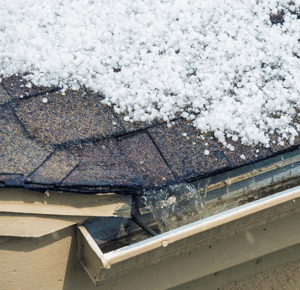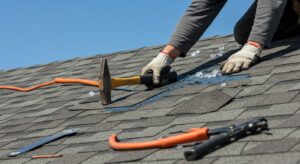Apr 28, 2025
The Best Materials for Hail Damage Repair on Your Roof
Hailstorms can be brutal on roofing systems, often leaving behind a trail of dents, cracks, and punctures that compromise both the appearance and performance of a roof. When it comes to repairing hail damage, choosing the right materials is critical not only for immediate fixes but also for long-term protection. Some materials hold up better than others, offering enhanced durability, longevity, and resistance to future weather-related wear. Understanding the best materials available for hail damage repair can help homeowners make informed decisions that safeguard their property for years to come.
Understanding the Impact of Hail on Roofs
Before diving into the best repair materials, it’s important to understand how hail affects different types of roofing systems. The size, speed, and density of hailstones can vary greatly, meaning the extent of damage can range from superficial bruising to full punctures. Asphalt shingles may lose granules or crack, while metal roofs can become dented. Tile or slate roofs may suffer from fractures, while flat roofs might experience punctures and membrane separation. The nature of the existing roofing material significantly influences the scope of repairs and the choice of materials for restoration.
Asphalt Shingles: Still a Viable Option with Upgrades
 Asphalt shingles remain one of the most common roofing materials in North America due to their affordability and ease of installation. Standard three-tab shingles, however, can be susceptible to hail damage. For hail-prone areas, impact-resistant shingles offer a much better option. These upgraded shingles are designed to meet specific Class 4 impact resistance standards, making them more durable in the face of hailstones. They often include a reinforced fiberglass backing that enhances their flexibility and resilience. When replacing damaged shingles, opting for these high-impact variants ensures better protection in the future.
Asphalt shingles remain one of the most common roofing materials in North America due to their affordability and ease of installation. Standard three-tab shingles, however, can be susceptible to hail damage. For hail-prone areas, impact-resistant shingles offer a much better option. These upgraded shingles are designed to meet specific Class 4 impact resistance standards, making them more durable in the face of hailstones. They often include a reinforced fiberglass backing that enhances their flexibility and resilience. When replacing damaged shingles, opting for these high-impact variants ensures better protection in the future.
Metal Roofing: Resilient and Long-Lasting
Metal roofing has gained popularity not only for its modern aesthetic but also for its strength and durability. In hailstorms, metal roofs tend to resist penetration even if they suffer minor denting. This makes them one of the more reliable options for both initial installation and post-hail repairs. Standing seam metal panels are particularly effective because they minimize seams and joints where water could potentially seep in after damage. Additionally, some metal roofing systems come with special coatings that reduce the appearance of dents and enhance their resistance to impact. For homeowners looking to replace damaged sections of their roof, metal can be a long-lasting and relatively low-maintenance choice.
Rubber Roofing: Flexibility That Absorbs Impact
For flat or low-slope roofs, rubber roofing systems—particularly ethylene propylene diene monomer (EPDM)—offer excellent performance in hail-prone areas. This material’s flexibility allows it to absorb and disperse the energy from hailstones, minimizing the risk of punctures or tears. When repairing a flat roof, installing a new membrane or patching with high-quality EPDM materials can effectively restore the roof’s integrity. Rubber roofing is also resistant to UV rays and temperature fluctuations, which adds to its long-term durability and makes it a wise investment for regions with extreme weather conditions.
Modified Bitumen: A Reinforced Option for Flat Roofs
Modified bitumen is another excellent material choice for flat or low-slope roofs, particularly when hail damage has compromised sections of the roof membrane. This roofing system is made from asphalt that has been modified with plastic or rubber polymers, resulting in increased elasticity and toughness. Torch-down or self-adhesive application methods allow for seamless repairs, reducing the chances of leaks or further deterioration. The multi-layer construction of modified bitumen systems provides added protection against impact, making them a strong contender for hail damage repair on commercial and residential buildings alike.
Clay and Concrete Tiles: Aesthetic Appeal with Strategic Reinforcement
 Clay and concrete tiles are known for their elegance and durability, but they can be vulnerable to cracking under hail impact. That said, reinforced concrete tiles and synthetic alternatives now offer greater resistance to breakage. During the repair process, replacing broken tiles with these impact-resistant versions can maintain the architectural style while improving the roof’s ability to withstand future storms. It’s essential to work with experienced roofing professionals when dealing with tile roofs, as improper installation or replacement can lead to water infiltration and structural issues.
Clay and concrete tiles are known for their elegance and durability, but they can be vulnerable to cracking under hail impact. That said, reinforced concrete tiles and synthetic alternatives now offer greater resistance to breakage. During the repair process, replacing broken tiles with these impact-resistant versions can maintain the architectural style while improving the roof’s ability to withstand future storms. It’s essential to work with experienced roofing professionals when dealing with tile roofs, as improper installation or replacement can lead to water infiltration and structural issues.
Synthetic Roofing Materials: Innovation Meets Durability
In recent years, synthetic roofing products made from polymer blends have emerged as an attractive solution for hail-prone areas. These materials are designed to mimic traditional roofing materials like slate, shake, or tile, but with enhanced impact resistance and lighter weight. Their flexibility and engineered composition make them highly resistant to hail damage. When choosing materials for repair or replacement, synthetic options offer a balance between style, resilience, and longevity, often with excellent manufacturer warranties.
More Details